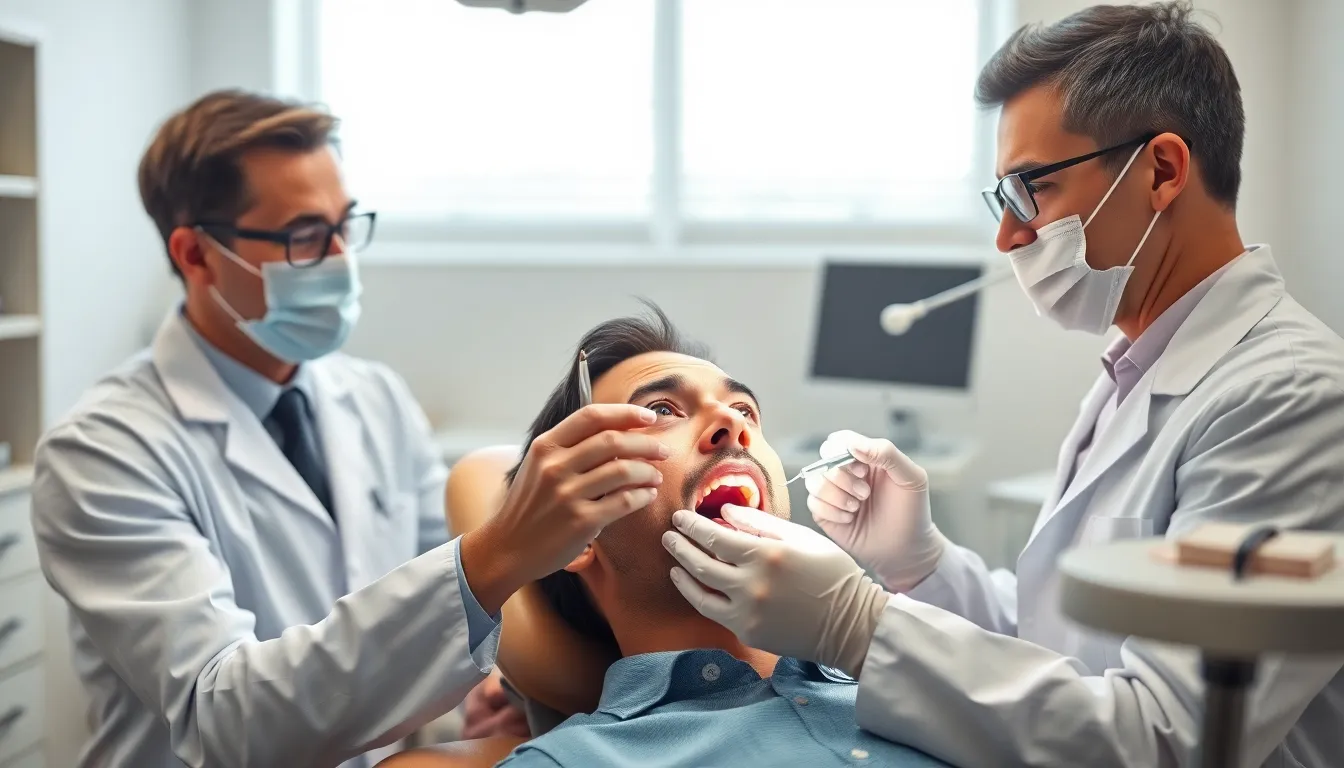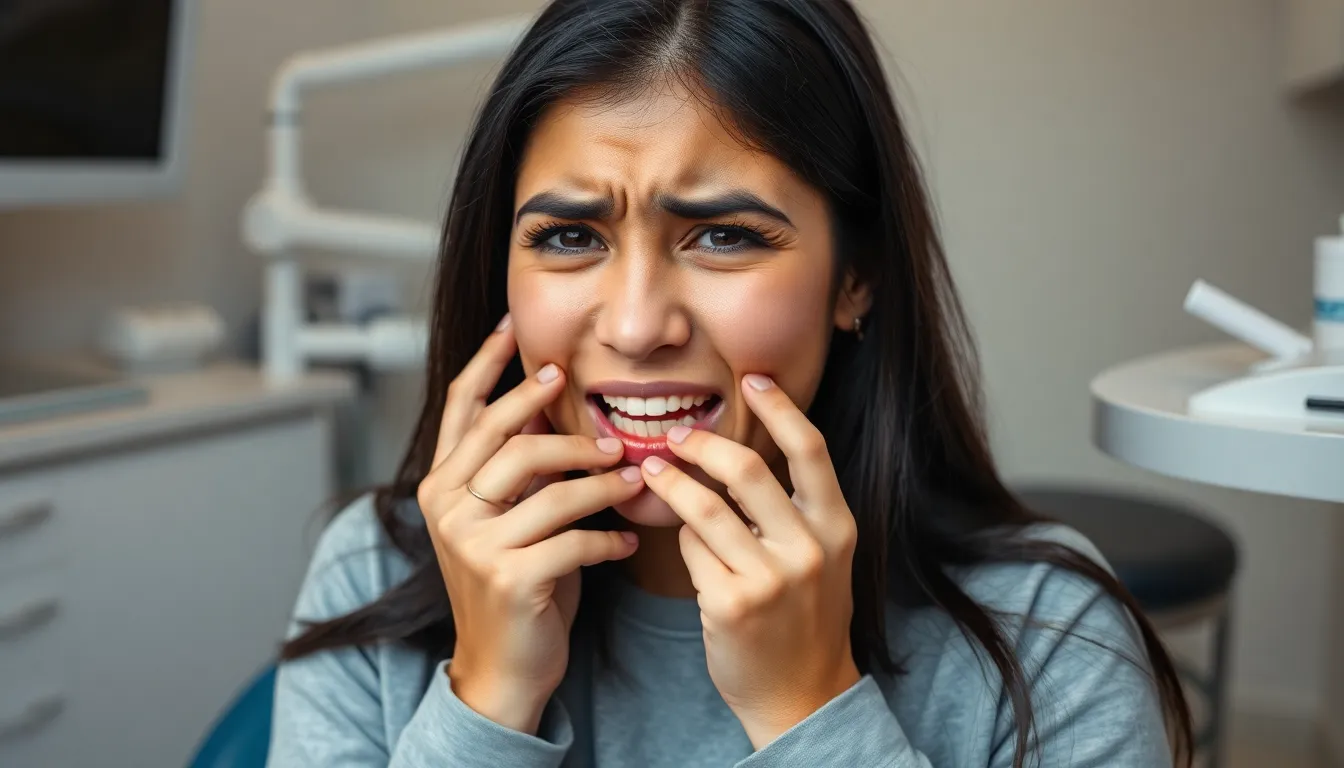Has Zoom whitening ruined your teeth? You’re not alone. What was supposed to be a smile-improving treatment has left many patients dealing with unexpected sensitivity, enamel damage, and discoloration.
When you opted for professional teeth whitening, you likely weren’t warned about the potential downsides. Zoom whitening, while effective for many, can sometimes lead to serious dental issues. The high-concentration hydrogen peroxide and intense light activation that makes Zoom work quickly can also cause important damage to teeth in some cases. If you’re experiencing pain or noticing changes in your dental health after treatment, understanding what went wrong and your options for recovery is crucial.
What Is Zoom Whitening: Understanding the Procedure
Zoom whitening is a professional teeth bleaching treatment performed in dental offices that uses a high concentration hydrogen peroxide gel (25%) activated by a specialized LED light. Dental professionals apply the whitening gel to your teeth after isolating them with protective barriers to shield your gums and soft tissues. The LED light enhances the bleaching process by accelerating the chemical reaction of the peroxide, breaking down stains embedded in the enamel.
The typical Zoom whitening session lasts about 45-60 minutes and involves three or four 15-minute application cycles. Between each cycle, your dentist removes the gel and applies a fresh layer to maximize whitening results. Many patients experience immediate results, with teeth appearing 5-8 shades lighter after just one session.
“I was excited about trying Zoom whitening after seeing the dramatic before-and-after photos online,” shares Maria, a patient of Dr. Todd B. Harris. “My dentist explained the procedure thoroughly, but I wish I’d researched more about the potential sensitivity issues that followed.”
Dental professionals consider Zoom whitening more effective than over-the-counter products due to its professional-grade peroxide concentration and light activation technology. The treatment costs between $400-$600 per session, making it a important investment compared to at-home alternatives that typically range from $20-$100.
Common Complaints About Zoom Whitening

While Zoom whitening offers dramatic results for many patients, some individuals report negative experiences with this professional teeth whitening treatment. Exact complaints tend to fall into several categories that dental professionals recognize as potential side effects of the high-concentration hydrogen peroxide gel and LED light activation used in the procedure.
Tooth Sensitivity Issues
Tooth sensitivity ranks as the most frequently reported side effect after Zoom whitening treatments. Approximately 70% of patients experience some degree of sensitivity, ranging from mild discomfort to sharp, shooting pain when consuming hot or cold foods and beverages. The hydrogen peroxide gel penetrates the enamel and temporarily irritates nerve endings inside the teeth, creating this uncomfortable sensation.
“After my Zoom treatment, I couldn’t even drink room temperature water without wincing,” shares Jessica, a 34-year-old patient. “My dentist had mentioned there might be some sensitivity, but I wasn’t prepared for how intense it would be for the first 48 hours.”
This sensitivity typically subsides within a few days to a week after treatment. Dentists often recommend using desensitizing toothpaste containing potassium nitrate or strontium chloride before and after the procedure to minimize discomfort. Avoiding extreme temperature foods and acidic beverages for 48-72 hours following treatment also helps reduce sensitivity issues.
Uneven Whitening Results
Uneven whitening creates another common complaint among Zoom whitening patients. This issue manifests as blotchy areas, white spots, or teeth that appear different shades from one another. Several factors contribute to uneven results:
- Existing dental work – Crowns, veneers, and fillings don’t respond to whitening agents the same way natural tooth enamel does
- Enamel variations – Natural differences in enamel thickness and mineral content across teeth
- Pre-existing stains – Deep intrinsic stains or tetracycline discoloration may not respond evenly
- Gel application issues – Uneven application or pooling of the whitening gel
Tom, a business executive who tried Zoom whitening, noted: “My front teeth looked great, but my canines barely changed color. It made my smile look strange until I went back for a touch-up treatment.”
Dental professionals can often address uneven results with targeted follow-up treatments or by recommending at-home whitening trays to gradually even out the shade. The initial unevenness sometimes balances naturally within 1-2 weeks as saliva redistributes minerals throughout the enamel.
Serious Dental Damage Concerns

Zoom whitening procedures can lead to serious dental damage in certain circumstances, even though being generally safe when performed by qualified professionals. Millions have undergone this treatment successfully, but improper application or pre-existing dental conditions significantly increase risk factors. Patients with untreated gum disease, tooth decay, or enamel defects may experience worsening of these conditions if not addressed before whitening treatment.
Enamel Erosion Problems
Enamel erosion represents one of the primary concerns associated with Zoom whitening treatments. The high-concentration hydrogen peroxide gel (typically 25%) can potentially weaken tooth enamel when overused or improperly applied. Many patients report a chalky feeling on their teeth immediately after treatment, which often indicates temporary enamel stress.
Dr. Todd B. Harris explains, “While the procedure is designed to be safe for dental enamel, repeated treatments without adequate recovery time can lead to cumulative damage that’s difficult to reverse.” Thinning enamel becomes more translucent, revealing the yellowish dentin beneath and ironically making teeth appear more discolored than before treatment.
Jane, a 34-year-old marketing executive, shared her experience: “After my third Zoom treatment in six months, my teeth became extremely sensitive and developed a rough texture. My dentist confirmed I’d experienced enamel erosion and recommended immediate cessation of all whitening procedures.”
Gum Irritation and Recession
Gum tissue reactions commonly occur during and after Zoom whitening treatments when protective barriers fail to completely shield soft tissues. The hydrogen peroxide gel can cause chemical burns to gum tissue, resulting in inflammation, pain, and temporary white spots on gums. These symptoms typically resolve within a few days but can be quite uncomfortable.
Repeated exposure to whitening chemicals may contribute to gum recession in susceptible individuals. Patients with thin gum tissue or existing recession face higher risks of experiencing worsening conditions. Proper isolation techniques during the procedure significantly reduce these risks, but they can’t eliminate them entirely.
Research indicates approximately 14% of patients experience some degree of gum irritation following Zoom whitening. Persistent gum problems after treatment warrant immediate dental consultation to prevent progression to more serious conditions like periodontitis. Protective measures including custom-fitted dental dams and careful gel application remain essential safeguards against these potential complications.
How Zoom Whitening Can Go Wrong

Zoom whitening procedures can result in undesirable outcomes when not performed correctly or under exact circumstances. The hydrogen peroxide-based gel activated by a special light brightens teeth effectively in most cases, but several factors can lead to negative experiences with this popular cosmetic dental treatment.
Improper Application Techniques
Incorrect application of Zoom whitening gel poses important risks to your dental health. Overusing the whitening gel or leaving it on teeth longer than the recommended time can lead to enamel erosion and increased tooth sensitivity. The hydrogen peroxide in the gel penetrates the enamel and may irritate nerve endings, causing temporary discomfort that typically resolves within days after treatment.
When the protective barrier isn’t properly applied, the gel can contact your gums, resulting in irritation and inflammation. “I’ve seen patients come in with chemical burns on their gums because the dental professional didn’t adequately protect the soft tissues during the procedure,” notes Dr. Todd B. Harris. “These preventable injuries create unnecessary pain and can delay the healing process.”
Pre-existing Dental Conditions
Your existing dental health significantly impacts how your teeth respond to Zoom whitening treatments. Individuals with untreated gum disease, tooth decay, or enamel defects experience heightened sensitivity and potential damage from the whitening process. These conditions compromise the protective barriers of your teeth, making them more vulnerable to bleaching agents.
Maria, a 42-year-old patient, shared her experience: “I didn’t mention my recurring sensitivity to my dentist before the procedure. The Zoom whitening amplified my discomfort tenfold, and I ended up with pain that lasted for weeks instead of days. I wish I’d been more forthcoming about my dental history.”
Dental professionals should conduct thorough examinations before recommending Zoom whitening. The assessment helps identify contraindications and allows for customized treatment plans that minimize risks while achieving desired whitening results. Without proper screening, patients with compromised dental health face greater chances of experiencing adverse effects that could have been avoided with appropriate precautions.
Safer Alternatives to Consider

If you’re concerned about potential damage from Zoom whitening, several gentler options can effectively brighten your smile with reduced risk. These alternatives provide balanced approaches to teeth whitening that prioritize both esthetic results and dental health.
Professional Options With Less Risk
Professional alternatives offered by dentists provide important whitening results while minimizing potential harm to your teeth. Dentists now offer customized in-office whitening treatments specifically designed for patients with sensitivity concerns. These treatments typically use lower concentrations of bleaching agents while still delivering noticeable results. Your dentist can evaluate your oral health thoroughly before recommending a personalized whitening plan customized to your exact needs and sensitivity level.
Dr. Todd B. Harris notes, “Many of my patients who experienced issues with Zoom have found success with phased whitening approaches that gradually brighten teeth over multiple shorter sessions rather than one intense treatment. This method significantly reduces sensitivity while still achieving the desired whitening effect.”
Effective At-Home Treatments
At-home whitening answers offer gradual improvement with minimal risk compared to intense in-office procedures. Professional take-home kits prescribed by dentists contain lower concentrations of bleaching agents (typically 10-15% compared to Zoom’s 25%) and custom-fitted trays that minimize gel contact with gums. These kits require consistent use over 1-2 weeks but produce results comparable to in-office treatments with substantially less sensitivity.
Over-the-counter options like whitening strips and toothpastes provide modest but noticeable improvements for mild discoloration. Products containing potassium nitrate specifically target sensitivity issues while whitening. Maria, who experienced severe sensitivity after Zoom whitening, shared, “After switching to a dentist-recommended at-home system with custom trays, I achieved even better results than with Zoom but without any of the painful sensitivity that kept me up at night after my in-office treatment.”
Whitening toothpastes and rinses offer the gentlest approach, removing surface stains through mild abrasives or chemical actions. Though these products work more slowly than other methods, they pose minimal risk to dental health and can be incorporated into your regular oral hygiene routine for ongoing maintenance.
How to Address Zoom Whitening Damage

Zoom whitening damage requires prompt attention to prevent long-term dental issues. The high-concentration hydrogen peroxide used in these treatments can sometimes lead to uncomfortable side effects or more serious complications that need professional care.
Dental Treatments for Damaged Teeth
Dentists offer several effective treatments for teeth damaged by Zoom whitening procedures. Professional fluoride treatments strengthen weakened enamel and significantly reduce sensitivity by remineralizing the tooth structure. Prescription-strength desensitizing agents applied in your dentist’s office target nerve irritation at its source, providing relief that over-the-counter products can’t match. For cases with visible enamel damage, dental bonding creates a protective layer over compromised areas, while veneers offer a more comprehensive solution for severely affected teeth.
Dr. Todd B. Harris explains, “I’ve treated many patients experiencing post-whitening complications. Many don’t realize that spacing out whitening treatments is crucial—I recommend waiting at least 6-12 months between professional whitening sessions to allow enamel recovery.”
Patients should also incorporate remineralizing toothpaste containing nano-hydroxyapatite into their daily routine, as this ingredient helps repair microscopic enamel damage. A soft-bristled toothbrush prevents further abrasion of sensitive teeth, while avoiding acidic foods and beverages for at least two weeks post-treatment minimizes additional enamel erosion.
Legal Options for Victims
Patients with severe Zoom whitening damage have several legal avenues to explore when standard dental remedies prove insufficient. Documenting your symptoms thoroughly creates a critical timeline of the damage progression—take photos of visible issues and keep detailed records of pain levels and limitations. Obtaining a comprehensive examination from an independent dental specialist provides crucial evidence of the damage extent and confirms whether it resulted from improper technique or negligence.
Sarah, a 34-year-old marketing executive, shared her experience: “After three days of excruciating pain following my Zoom treatment, I discovered my dentist had applied the gel incorrectly. I consulted a dental malpractice attorney who helped me file a claim that covered my extensive restoration work.”
Dental malpractice claims require proving that your provider failed to meet the standard of care through improper application, excessive treatment duration, or inadequate pre-treatment screening. State dental boards investigate complaints about practitioners and can impose disciplinary actions, while consumer protection agencies address false advertising claims about treatment safety or effectiveness. Insurance negotiations often yield compensation for corrective treatments without the need for lengthy litigation processes.
Conclusion
While Zoom whitening offers dramatic results for many patients it’s not without risks. Your smile’s health should always take priority over cosmetic enhancement. If you’ve experienced negative effects from this treatment don’t hesitate to seek professional help immediately.
Remember that alternative whitening methods exist that may better suit your dental needs. Before pursuing any whitening treatment ensure you receive a thorough dental examination and discuss your medical history with your provider.
By staying informed and working closely with qualified dental professionals you can make choices that brighten your smile without compromising your oral health. Your teeth are irreplaceable assets deserving protection even in pursuit of that perfect white smile.
Frequently Asked Questions
What is Zoom whitening and how does it work?
Zoom whitening is a professional teeth whitening treatment performed in dental offices. The procedure involves applying a 25% hydrogen peroxide gel to the teeth, which is then activated by a specialized LED light. A typical session lasts 45-60 minutes with multiple application cycles, resulting in teeth appearing 5-8 shades lighter after just one treatment. The professional-grade ingredients and technology make it more effective than over-the-counter whitening products.
How much does Zoom whitening cost?
Zoom whitening typically costs between $400 and $600 per session. This price varies based on location, dental office, and whether additional treatments are included. While more expensive than over-the-counter options, many patients choose Zoom for its immediate and dramatic results. Some dental offices offer payment plans or include Zoom treatments in comprehensive cosmetic packages.
What are the most common side effects of Zoom whitening?
The most common side effect is tooth sensitivity, affecting approximately 70% of patients. This can range from mild discomfort to sharp pain when consuming hot or cold items. Other common issues include uneven whitening results (appearing as blotchy areas or different shades), gum irritation, and temporary discomfort. Most of these side effects are temporary and subside within a few days following treatment.
Can Zoom whitening damage tooth enamel?
Yes, Zoom whitening can potentially damage tooth enamel, particularly with repeated treatments or improper application. The high-concentration hydrogen peroxide can weaken enamel, leading to a chalky feeling and increased translucency of teeth. Patients with pre-existing enamel defects are at higher risk. This damage can result in long-term sensitivity and increased vulnerability to decay if not properly managed.
How long does tooth sensitivity last after Zoom whitening?
For most patients, tooth sensitivity after Zoom whitening subsides within 24-72 hours. However, some individuals may experience sensitivity for up to two weeks, particularly those with pre-existing dental conditions or thin enamel. Using desensitizing toothpaste, avoiding extreme temperature foods, and taking over-the-counter pain relievers can help manage discomfort during this period.
What can I do if I experience severe pain after Zoom whitening?
If you experience severe pain after Zoom whitening, contact your dentist immediately. They may recommend professional-grade desensitizing treatments, fluoride applications, or prescription pain relievers. Avoid hot, cold, or acidic foods and beverages. Use a soft-bristled toothbrush with desensitizing toothpaste. For persistent or extreme pain, a dental evaluation is necessary to rule out more serious damage requiring intervention.
Are there safer alternatives to Zoom whitening?
Yes, several safer alternatives exist. Professional options include customized in-office treatments with lower concentrations of bleaching agents or phased whitening approaches involving multiple shorter sessions. Dentist-prescribed at-home whitening kits with custom-fitted trays offer gradual improvement with reduced risk. Over-the-counter options like whitening strips and toothpastes provide modest results with minimal sensitivity, though results develop more slowly than professional treatments.
Who should avoid Zoom whitening?
Individuals with untreated gum disease, tooth decay, exposed roots, or significant enamel defects should avoid Zoom whitening. The treatment is also not recommended for pregnant or nursing women, children under 16, and people with extremely sensitive teeth or certain dental restorations (crowns, veneers). Those with a history of severe reactions to whitening treatments should explore gentler alternatives with their dentist.
What legal options exist if Zoom whitening damaged my teeth?
If you’ve experienced severe damage from Zoom whitening, document all symptoms and seek an independent dental examination. Potential legal options include filing a dental malpractice claim if negligence or improper technique can be proven. Many cases are resolved through insurance negotiations rather than litigation. Consult with a lawyer specializing in dental malpractice to determine if you have a valid claim for compensation for additional dental work or pain and suffering.
How can I treat damaged teeth after Zoom whitening?
To treat damaged teeth after Zoom whitening, seek prompt dental care. Treatment options include professional fluoride applications to strengthen enamel, prescription-strength desensitizing agents, dental bonding for affected areas, or veneers for severely damaged teeth. At home, use sensitive toothpaste, avoid whitening products, and follow your dentist’s recommendations for specialized care. Allow adequate time between whitening treatments to prevent further damage.







